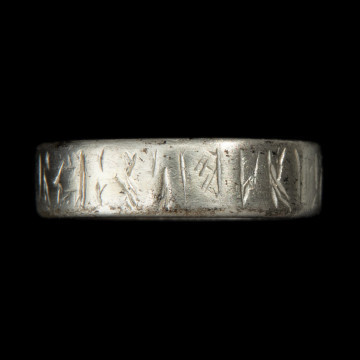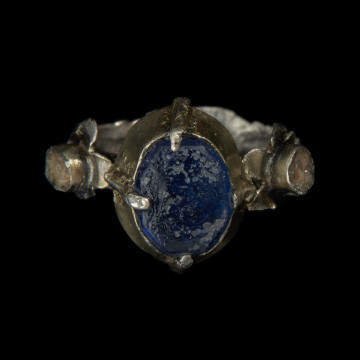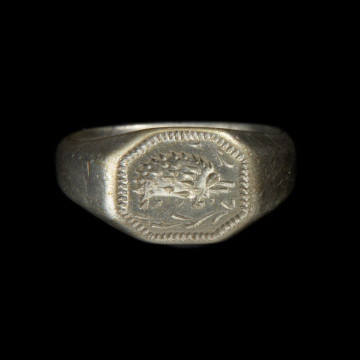
Wedding ring
przełom XIV i XV wieku
National Museum in Szczecin
Part of the collection: Szczecin treasure from Podzamcze
Various types of ornaments made of precious metals belonged to the elements of medieval costumes. Characteristic ornaments, also fulfilling utilitarian functions, in the 14th - 15th centuries were embroidery hooks and those closely connected with one, which consisted of a hook and eyelet and formed a bipartite fastener. The first hooks appeared at the end of the 13th century in central Germany, especially in the cities of the Hanseatic League, to which Szczecin belonged from 1278. In the homes of wealthy Lübeck and Stralsund, located near Szczecin, costume ornaments made of silver were not uncommon. Beautifully decorated embroideries and hook-and-eye items were found in Szczecin in 1999, during archaeological research in the area along the river Oder. They were part of a treasure of Pomeranian ornaments and coins hidden under the floor of one of the houses at Targ Rybny (the Fish Market). One of the embroideries is decorated with images of two walking griffins holding a shield with a coat of arms in the form of a rosette. When shown in profile, the mythical creature was a symbol of many Pomeranian cities, including Szczecin and the princely Griffin dynasty. On the other hand, the rosette motif, i.e., floral and plant decoration, was quite commonly used in the art of the late Middle Ages.
Małgorzata Peszko
Author / creator
Dimensions
cały obiekt: height: 21,5 mm, width: 45 mm
Object type
costium adorment, adornment
Creation time / dating
Creation / finding place
Identification number
Location / status

przełom XIV i XV wieku
National Museum in Szczecin

National Museum in Szczecin

przełom XIV i XV wieku
National Museum in Szczecin
DISCOVER this TOPIC
Museum of King Jan III's Palace at Wilanów
DISCOVER this PATH
Educational path